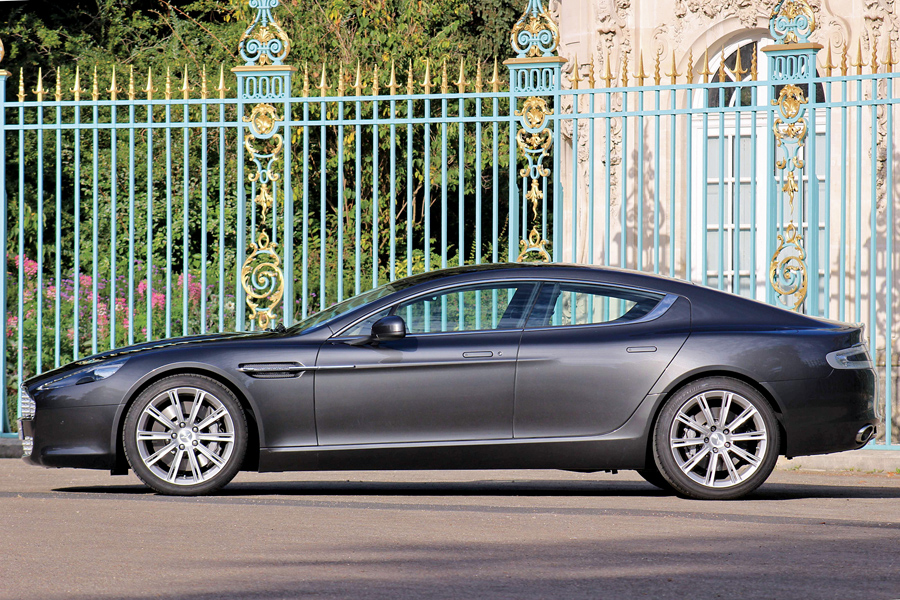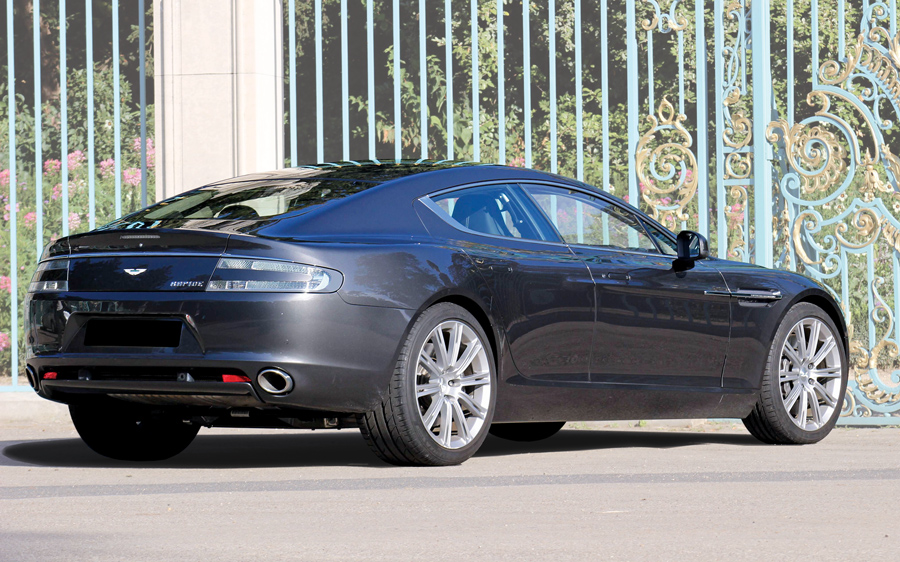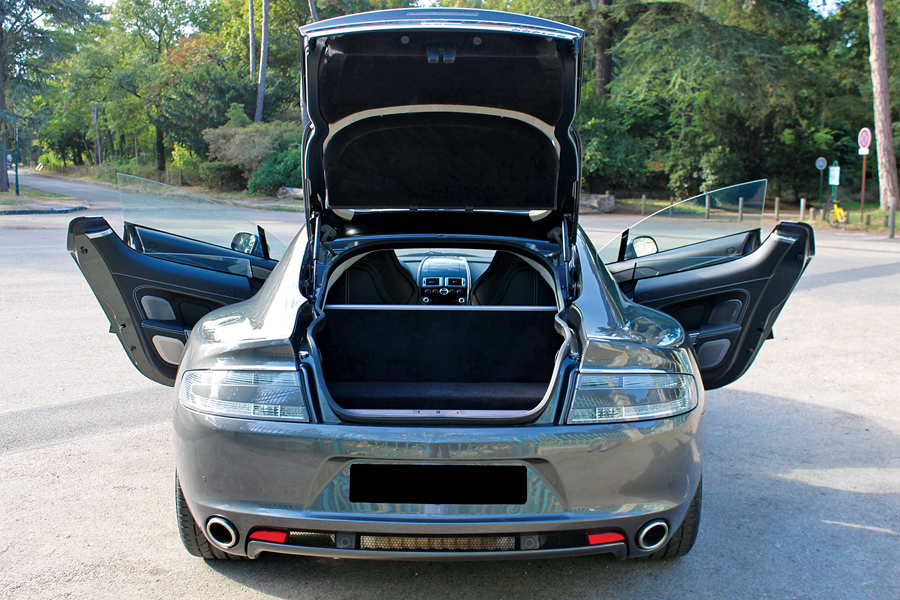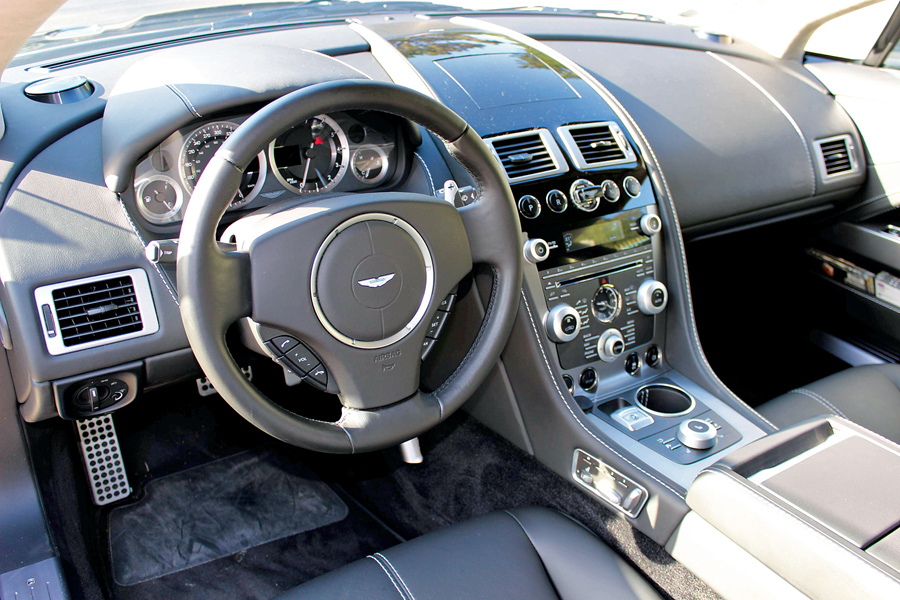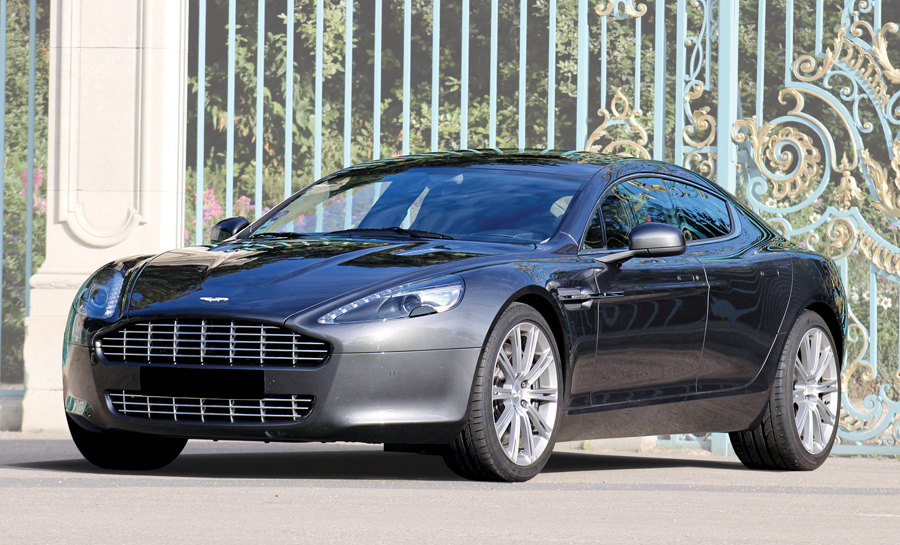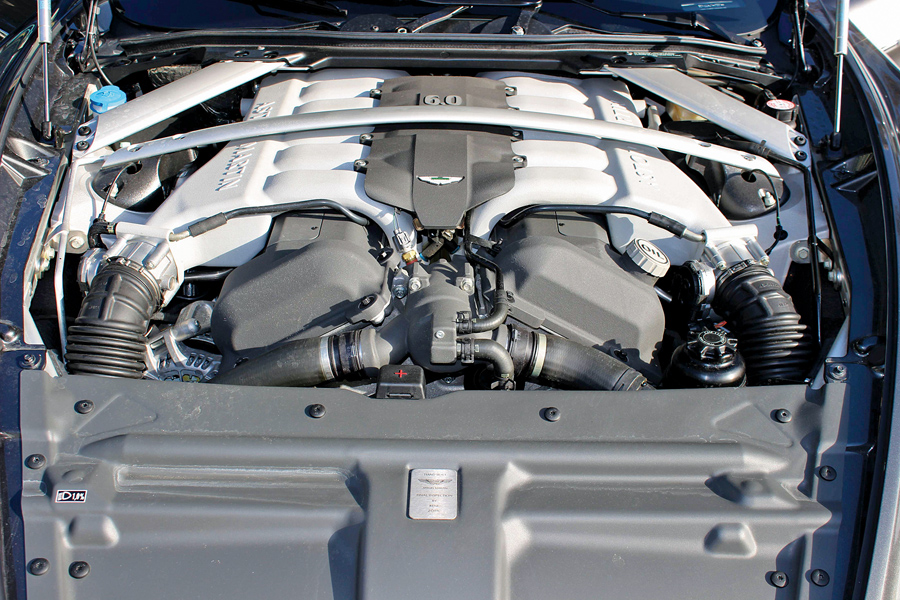SCM Analysis
Detailing
| Vehicle: | 2010 Aston Martin Rapide |
| Years Produced: | 2010 through 2018 |
| Number Produced: | Fewer than 2,000 a year |
| Original List Price: | $198,250 |
| SCM Valuation: | $101,200 |
| Tune Up Cost: | $2,200 for comprehensive four-year service |
| Chassis Number Location: | Left-hand corner under windshield |
| Engine Number Location: | Stamped on the upper left-hand side of engine block |
| Club Info: | Aston Martin Owners Club |
| Website: | http://www.amoc.org |
| Alternatives: | 2011–18 Porsche Panamera Turbo S, 2006–13 Bentley Continental Flying Spur, 2004–16 Aston Martin DB9 coupe |
| Investment Grade: | C |
This car, Lot 34, sold for $103,429, including buyer’s premium, at Artcurial’s auction in Paris, FRA, on November 4, 2018.
Sherman, set the Way-Back Machine to 2009 and let us venture to Gaydon in the English countryside and the newish Aston Martin headquarters.
Man, this place has a lot of travertine.
Seems many of the fancy offices are occupied (bad use of that word) by folks from Germany. Have we overshot the U.K. and did we drop into Stuttgart?
“Sign outside says Gaydon, Mr. Peabody.”
Hmmmm… a quick history lesson is unfolding. Come along now.
A new direction for Aston Martin
The autocrat, I mean CEO, at the helm of Aston Martin during this era was Dr. Ulrich Helmut Bez, an ex-employee of BMW and Porsche.
Biggest kudos to him for implementing the “VH” architecture that was a huge improvement in the chassis manufacturing process that would be used for a generation of new Aston Martins.
Did I mention that Dr. Bez had a curriculum vitae mostly in engineering? Could Dr. Bez’s VH architecture be stretched into a proper sedan? Could he annex, conquer and vanquish the competition in this luxury segment?
Perhaps Aston Martin could offer folks nosing around a Porsche Panamera or Bentley Flying Spur a viable alternative?
Well, the brutal answer was and still is, well, no, but we need a little more Aston Martin sedan context. Dr. Bez was attempting to broaden Aston Martin’s range of cars, as the bottom line needed more black ink.
Going back a little farther…
Aston’s first 4-door, not so coincidentally called the Lagonda Rapide, was a stablemate to the glorious DB4 and DB5 cars. A whacking total of “55 too many” were made.
Not learning any lesson there — and because David Brown wanted another new luxo-box for himself — a second foray into this sedan vortex happened in 1969 with a 4-door prototype (miscue) that led to a grand total of seven (again too many) customer-copy V8 Lagonda Series I cars.
The brutal, masculine shape of the DBS/V8 Aston was given an extra set of doors. Today, this sedan looks like something you’d Photoshop just to see how many folks you could fool on the Internet.
Can we stop now? No.
The pinnacle of all things awful still remains the Aston Martin Series 2/3/4 Lagonda built between 1978 and ’90. SCM readers are well aware of my utter disdain for this travesty. Let the letters fly.
So, decades later, the Rapide was created.
The fourth try for an Aston Martin sedan
Because Dr. Bez was as malleable as ceramic tile already mortared and grouted, it was his way or the Autobahn. There was no committee that could alter his path once his edict for an Aston Martin sedan came down — obvious flaws and shortcomings included.
I’ve been joking about this Anglo-Teutonic business marriage at Aston Martin, but having witnessed this firsthand, Dr. Bez was going to build what he wanted you to buy and there was no debate. He simply knew better. You have the backstory now.
Dr. Bez hated cup holders as much as he hated useful rear seats. He wanted to better Porsche — his ex-employer — and he hung his hat on a beautiful design. Sadly, function followed it.
Not a true sedan — but what a ride
Although only kids and tiny (think 24-inch inseam) adults work in the Rapide’s diminutive rear seating (the biggest fault with the car), the pros of owning one are very obvious once you’ve had time to wallop the gas pedal.
The car wasn’t a failure as a design or as a driving experience. It didn’t sell in great volume because it wasn’t a true 4-seater, wasn’t four-wheel drive and was too expensive when compared with a Porsche Panamera Turbo S.
I drove my first Rapide demonstrator to Manhattan from Boston, and from the driver’s seat I never felt the extra length whatsoever. The Rapide behaves like a DB9GT and is every bit as good looking and comfortable to pilot.
Acceleration, braking, interior appointments and overall usefulness lead to quite a package.
Not a collectible, but a terrific daily driver
If you need a sporting luxury 2-seater with room (once the rear seats are folded down) for luggage — and that will take you cross-country — this is the rig.
Treat it as a 2-seat hatchback, and you’ll be thrilled to own one. Leave the back seats down permanently.
When you see — and drive — this car, think “value.” Don’t think “collectible,” “investment” or anything other than a great used-car opportunity. Of course, it will still depreciate (these were all well above $200k when new) a bit. But put 10k miles a year on one and drive around in pure style and treat it as a daily car much like a Range Rover or Mercedes wagon.
My store recently sold two Rapide S cars. A 2014 car sold for $110,000 and a 2016 one went for $130,000. Demand has been created, and the word is out. There’s an automotive sales lesson there somewhere for supply and demand at this price point.
Clearly the car is aging well.
Our subject Artcurial car seems fully priced. Maybe it is harder to find Rapides in Europe? Maybe the new custodian was the same fellow who overpaid for that Lagonda I wrote about years ago and is starting a sedan collection and only buys at auction?
Another attempt on the way
Aston Martin has had a history of wandering into manufacturing flawed sedans — much to the chagrin of this dealer, most anyone with automotive aesthetic taste and certainly erudite Aston Martin owners.
But there’s hope on the horizon to solve this problem, and it’s not far off.
I’m quite sure Aston Martin’s newly announced DBX SUV will remedy all past ills when it comes to shuttling four or five adults around, and the mistakes from the past won’t be an issue.
Selfishly speaking, a proper 4WD SUV is perfect for my New England market, and it will remedy the shortcomings of Dr. Bez’s Anglo-Teutonic wannabe Panamera beater that was built with two doors too many. ♦
(Introductory description courtesy of Artcurial.)
